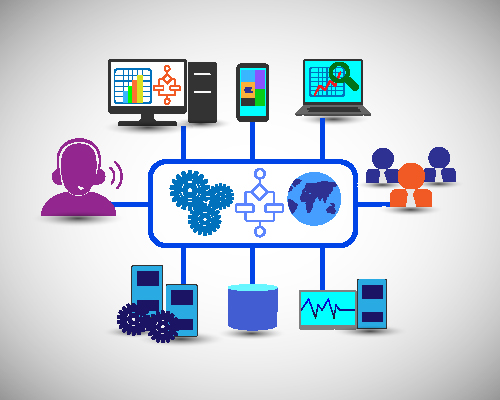 The Need for Active IT Infrastructure Management
The Need for Active IT Infrastructure Management
For any company, their IT infrastructure is one of the most important resources which they need to keep the business running. The infrastructure consists of hardware, software, and network systems working together to provide data services for the entire company.
With a constantly evolving IT landscape, and newer and more powerful types of malware threatening the safety of entire networks, it becomes essential to put in place a system of network maintenance and protection that not only responds to external attacks and internal problems, but also actively seeks out possible problem patterns and resolves them before they transform from a possible risk to a certain danger. Thus, the company can gain insights into issues before the end-user knows about them, and resolve them right from the beginning.
IT Management Practices
Taking a proactive approach to managing the health of your IT infrastructure involves implementing various types of ongoing monitoring activities, which are mainly divided into two categories:
Agent Based Monitoring
An agent keeps a watchful eye on all the applications in use, in order to intercept any type of behavior deemed suspicious and a possible threat, by collecting and analyzing the relevant performance-based data.
Agentless Monitoring
This form of monitoring is in turn divided into two parts:
- Local Mode – When you have an application running on the same physical or virtual device and are able to collect the necessary data using specific log files or application programming interface, or through calculating performance based metrics from base capabilities of the infrastructure.
- Appliance Mode – Running a specific piece of hardware or software from a remote location which is separate from the target environment but is able to collect the necessary data through a network system connection.
The Four Levels
There are four levels of monitoring to consider for IT infrastructure monitoring:
- Monitoring the hardware of the system to ensure no problems occur due to faulty equipment.
- Monitoring the health of the OS/Subsystem level to ensure no harm comes to the memory of the computer.
- Monitoring the various applications that are running on the system.
- Monitoring the cloud network to ensure performance errors are not transferred between computers.
Benefits of Active Monitoring
The practice of taking a proactive approach to system monitoring has many advantages:
- Maximizing the return on investments made through the buying of IT infrastructure by ensuring that the system is able to function well for a long period of time.
- Problems and issues are anticipated in the early stages of production and dealt with right from the beginning, meaning the problem does not pose a threat to the final stages of production.
- A standard of quality is established for the infrastructure and adhered to through transparency of the entire network system and the availability of measurable metrics for applications.
- The company can exert greater control over the entire IT system and lay the foundation for increased reliability and future scalability.
